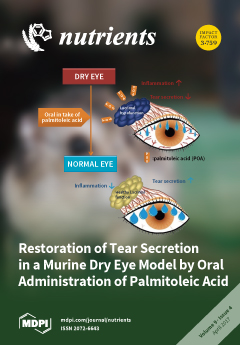Protein-energy wasting (PEW) is highly prevalent in hemodialysis (HD) patients. We investigated the association of abnormal ankle brachial index (ABI), PEW, and chronic inflammation status with clinical prognosis in HD patients. A total of 973 HD patients were enrolled and were followed-up for
[...] Read more.
Protein-energy wasting (PEW) is highly prevalent in hemodialysis (HD) patients. We investigated the association of abnormal ankle brachial index (ABI), PEW, and chronic inflammation status with clinical prognosis in HD patients. A total of 973 HD patients were enrolled and were followed-up for 8 years. As a marker of the PEW, geriatric nutritional risk index (GNRI) was used. Cut-off levels were 91.2 for GNRI defined from previous studies and 1.9 mg/L for C-reactive protein (CRP) as median value, respectively. Abnormal ABI was seen in 332 (34.1%) patients. Declined GNRI and elevated CRP levels were independently associated with abnormal ABI (odds ratio (OR) 0.97, 95% confidence interval (CI) 0.96–0.99,
p = 0.0009 and OR 1.40, 95% CI 1.07–1.83,
p = 0.013, respectively). GNRI levels were also independently correlated with CRP levels (β = −0.126,
p < 0.0001). During follow-up period, 283 (29.1%) patients died, including 123 (12.6%) due to cardiovascular disease (CVD). Abnormal ABI (adjusted hazard ratio (HR) 1.62, 95% CI 1.13–2.32,
p = 0.0096), GNRI < 91.2 (adjusted HR 1.57, 95% CI 1.06–2.33,
p = 0.023) and CRP > 1.9 mg/L (adjusted HR 1.89, 95% CI 1.31–2.77,
p = 0.0007) independently predicted mortality due to CVD, respectively. In conclusion, abnormal ABI, GNRI, and CRP levels were closely associated with each other, and the combination of these variables increase their predictive values for the risk of mortality due to CVD and all-cause mortality in HD patients.
Full article






